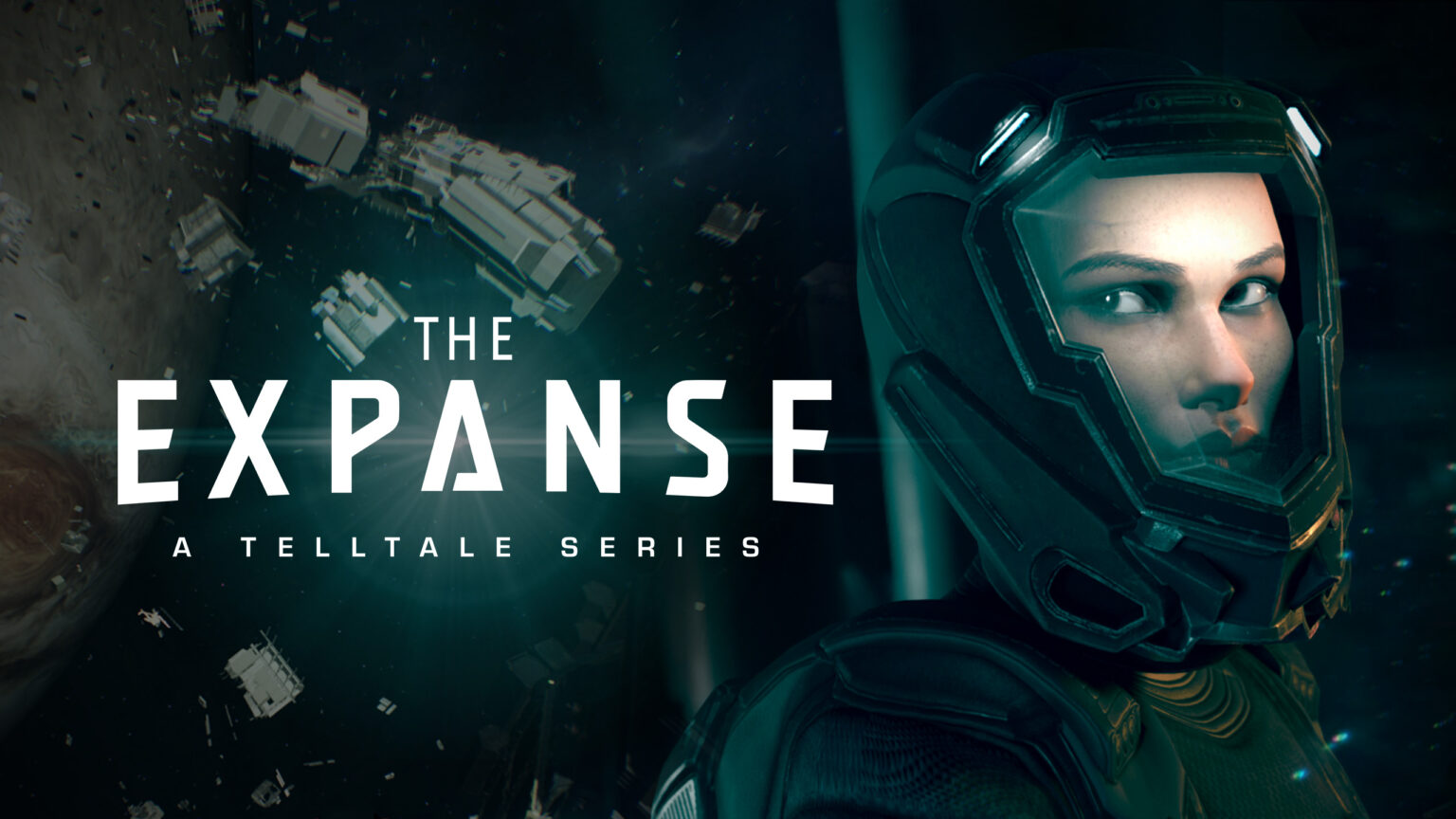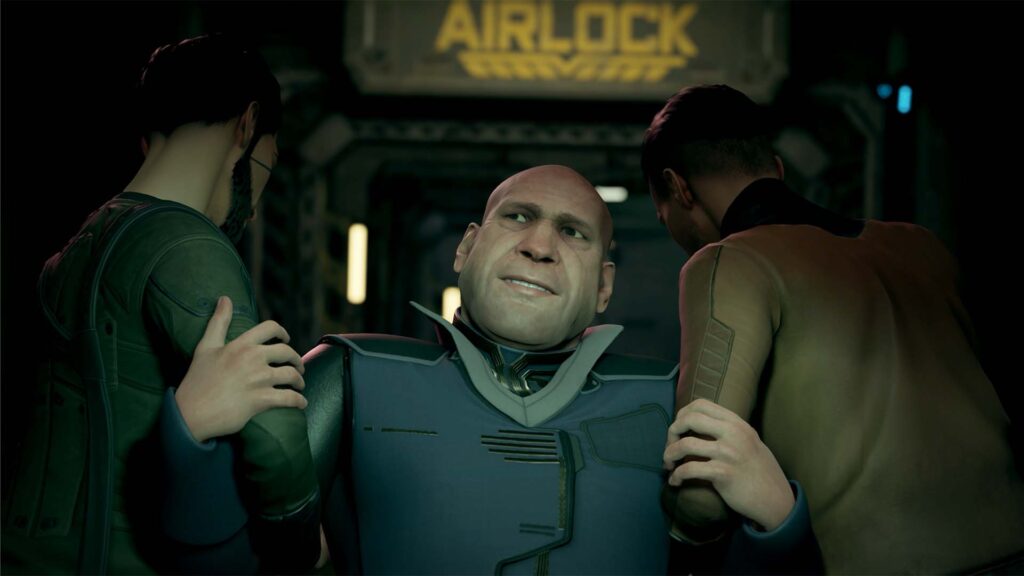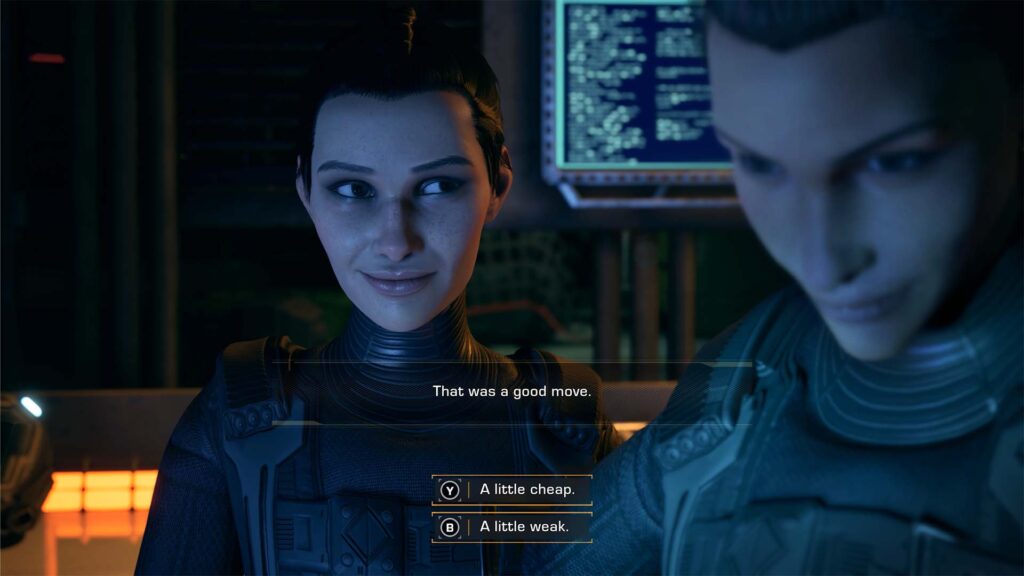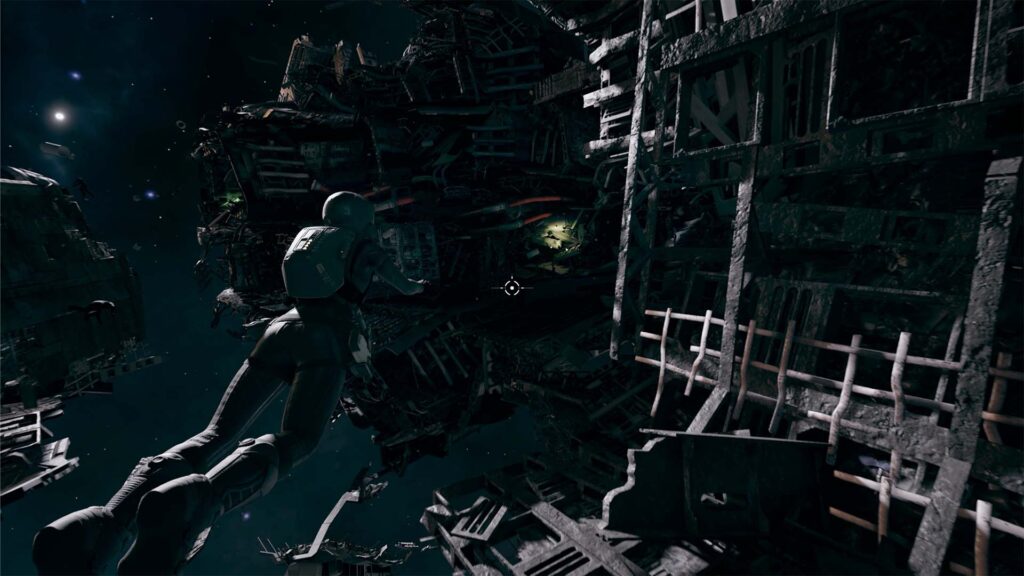I will be frank. I have no personal ties or connections to The Expanse series as a whole. I am not familiar with its lore and media in any shape or form. As such, I had no idea what exactly to expect heading into a video game that was using its intellectual property as its primary foundation.
However, what isn’t new to me is Telltale Games. I’ve been an avid fan of most of their games since the days of the first season of The Walking Dead. The variety of dialogue and game-altering choices captivated me, despite Telltale’s games lacking in the “gameplay” department as a result. That never bothered me and I was perfectly content to enjoy and experience the games the way they were, even if a vocal group did criticize these games for being glorified novels rather than actual video games.
So, not knowing what to expect from The Expanse but familiar with Telltale’s signature style, I launched myself headfirst into the company’s first new game since the studio’s closure back in 2019.
Presentation in The Expanse
We eat with our eyes.
What becomes immediately clear the moment players boot up the game is the smoothness of the overall experience. Telltale games back in the day were known for their jank and less-than-desirable stiffness in both animation and presentation. The Expanse is mostly void of those issues, facing very little hiccups throughout my two-episode long play session (given that’s all that is available to play at the time of writing). There have been vast improvements made over Telltale’s prior game engine and it shows.
The one thing I do have an issue with is a stylistic one. Telltale’s games have mostly adopted an aesthetic that went as close as possible to the original IP they were adapting. It worked brilliantly for games ripped straight from comics like The Walking Dead, The Wolf Among Us, and Batman and games with unique art direction like Tales from the Borderlands and Minecraft. These art styles lent themselves well to Telltale’s games. Realism was never their strong suit.
Because The Expanse is based on a live-action television series of the same name with a recognizable lead character, Telltale utilizes a caricature-like art style that blends realistic faces and video game exaggeration. Though inoffensive, what this does is drive me in and out of the uncanny valley time and again, with Camina Drummer and her crew mates’ faces donning less than human faces infrequently. In a setting where I want to feel invested and immersed, it is a bit immersion-shattering to see some uncanny faces.
Animations feel floaty and like they’re lacking impact but I am willing to give it the benefit of the doubt given that the story is taking place in dark recesses of space. That doesn’t excuse the facial expressions though (unless there’s some Expanse lore that explains this and I’m just not getting).
Gameplay/Story Integration
Telltale’s games relied heavily on the writing to do the heavy lifting across most of their episodic series. The games lived and died based on how compelling each of their narratives were and how much player agency impacted said narrative.
Despite offering a myriad of dialogue routes and choices for players, Telltale was criticized for how these “choices” were ultimately meaningless, as most of their games often followed the same plot beats and conclusions despite the player’s best efforts to derail or alter the narrative.
The Expanse thrusts players into the magboots of XO Camina Drummer. In the context of the game, she’s a grizzled Belter and scavenger, a human faction that resides on the fringes of the solar system, unlike the Inners, who are humans who inhabit planets like Earth and Mars. She has taken her post on the scav ship, the Artemis, to make a living in the Belt and to run away from the massive bounty on her head.
I’m sure she has a much richer history in the show, but that’s all I am given when I start and the developers feel comfortable in providing those details considering they vouched that the game would act as a great entry point for people new to the series.
It’s much too early to see the implications of all the choices the player makes in The Expanse. However, we can see how much more streamlined and trimmed the choices are when players are prompted, usually offering two directly contrasting choices and rarely offering a third option.
These choices can be as insignificant as breaking up a fight between two siblings aboard the ship, the Artemis, or as drastic as choosing to outright kill a member of the crew. The consequences of our choices are felt pretty immediately (but given that we only have two episodes at this point, it’s hard to say what the end result of all these choices amount to).
However, lacking the option of four choices makes subsequent playthroughs feel a bit dry and not as varied as other Telltale titles, which boasted four choices to make at almost every dialogue exchange that carried with them branching conversations.
As such, the first episode feels a bit lackluster. We are put in charge of a crew that we are supposed to feel invested in and have history together, but the lack of meaningful dialogue interspersed throughout the pilot really does not do a good job at getting the players to care about Camina’s fellow Artemis members.
Another issue with The Expanse as of now is how short each of the episodes are. Previous Telltale games’ episodes could stretch anywhere from two to four hours depending on how fast or slow you were taking the experience. The Expanse’s first episode clocks in under two hours and the second one isn’t so different.
This brevity further illustrates my previous point on how weak the first episode feels. It almost feels like we are just put into the action only to be taken out of it the moment things start getting good.
What partially makes up for this is the gameplay. As everyone knows at this point, Telltale isn’t exactly known for riveting gameplay sequences that immerse players into feeling like the characters they are controlling. These usually can be broken down to janky controls and shoddy quick time events.
The Expanse isn’t entirely free of those things but it also contains the most dynamic gameplay players will ever have received from a Telltale game.
Camina is a space scavenger, hunting through the wrecks of dead and defunct space ships for supplies and gear. Telltale did a magnificent job of replicating that feeling with their zero-gravity sections, where players can escape the surly bonds of gravity and go anywhere, literally.
Outside of scripted sequences, there is no up, down, left, or right. Players can adjust themselves omnidirectionally to explore the dilapidated space wrecks, which are impressive set pieces in and of themselves. In fact, it is so well done, these sequences can be motion sickness inducing at times.
These areas can be played at the players leisure. They can blast right through these, getting from main objective to main objective, or take it slow and recover all the bonus items littered throughout the wreckage.
But the thing is, even though I DID take my time in these areas, I still finished the first episode in about an hour. And because all Telltale episodes end with a cliffhanger, it left me wanting to know what happens next but also with a sour taste in my mouth.
This doesn’t feel like the Telltale of back then, and it shows. It feels like a blessing because the developers aren’t put through significant crunch time and we are actually getting episodic releases on schedule this time around, but also like a curse due to me wanting so much more out of these narrative excursions.
With the third episode on its way soon, I hope the writing of The Expanse pulls through and gets me to care about its characters as much as other Telltale games did. Because as of right now, though the Expanse reaches far into a variety of areas, those areas feel only skin deep.
Stay tuned at Gaming Instincts via Twitter, YouTube, Instagram, and Facebook for more gaming news.
No related posts.









